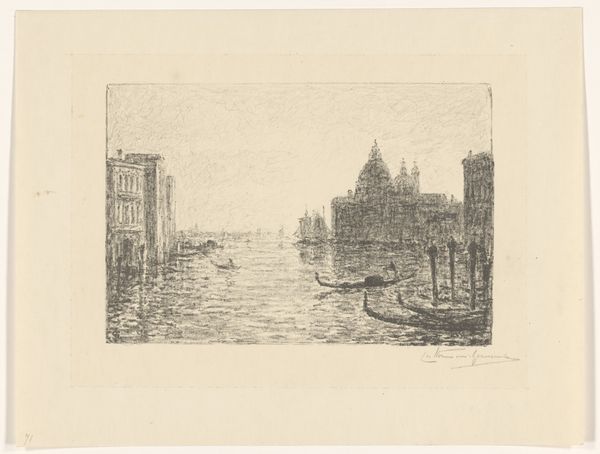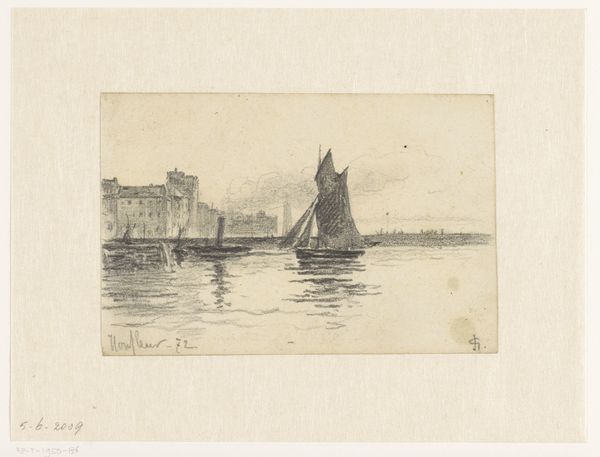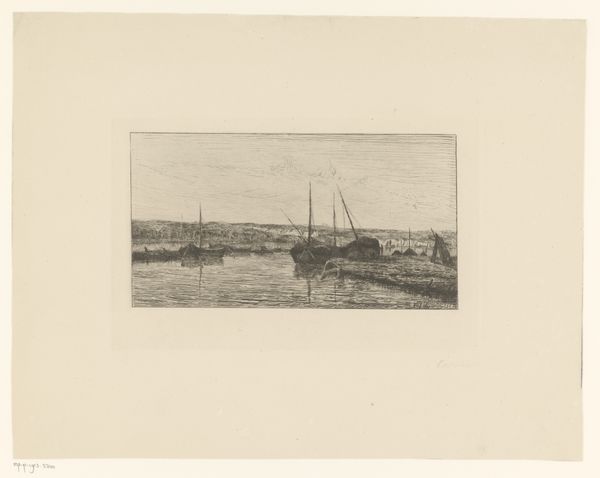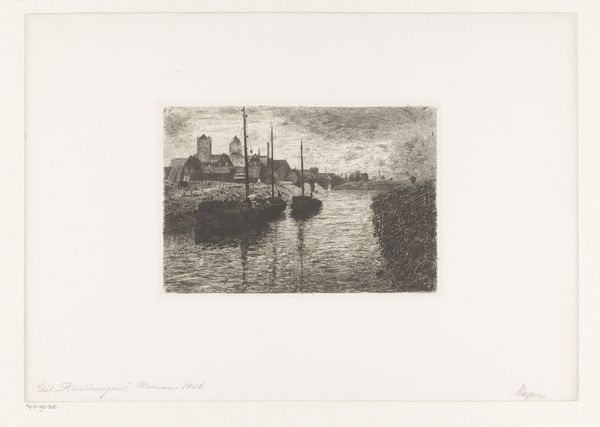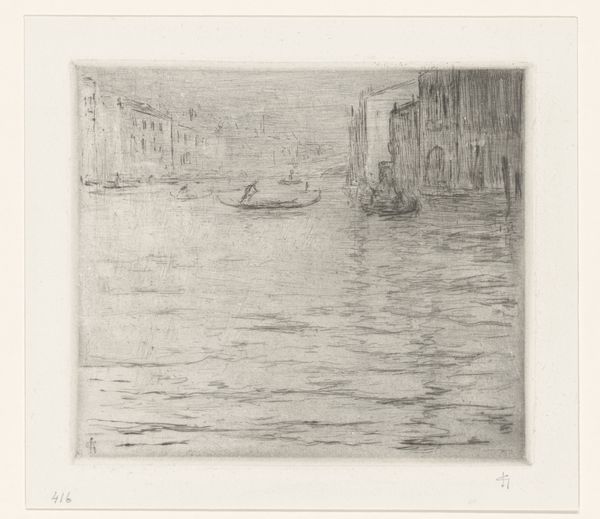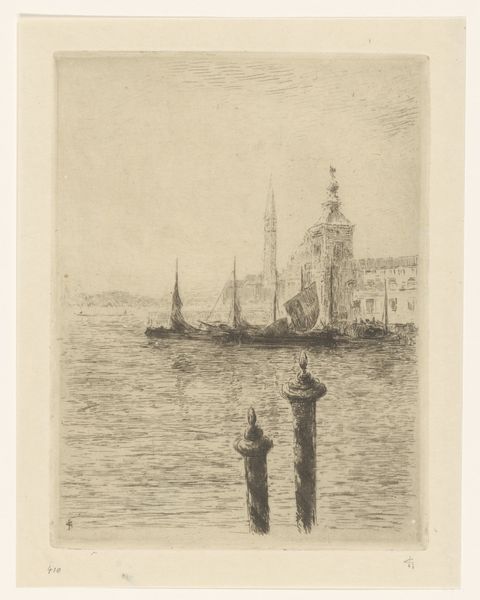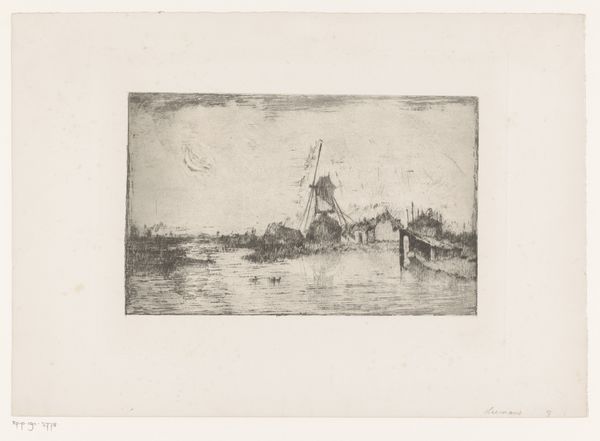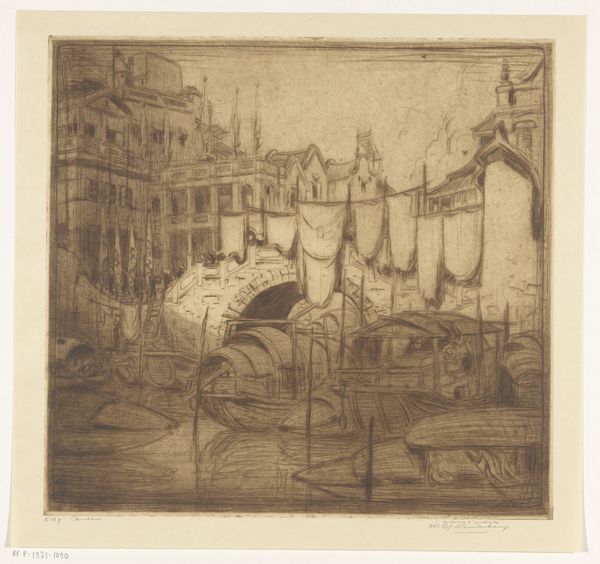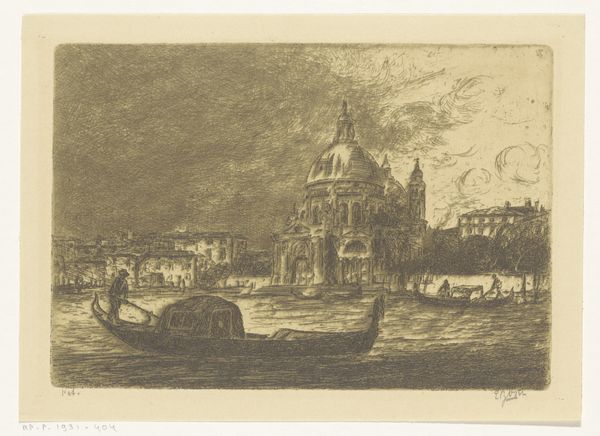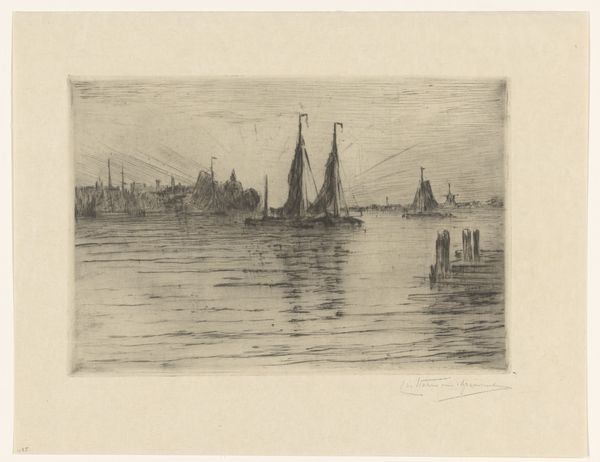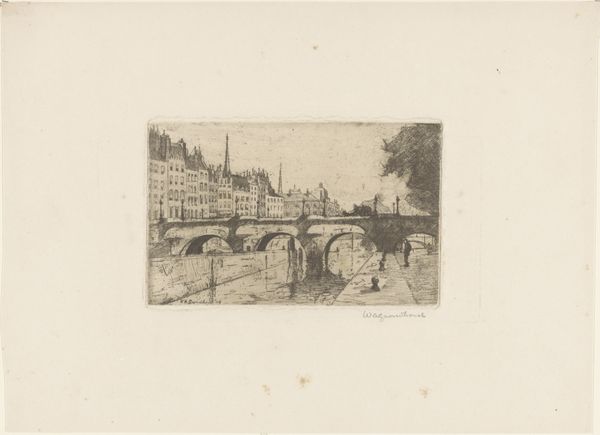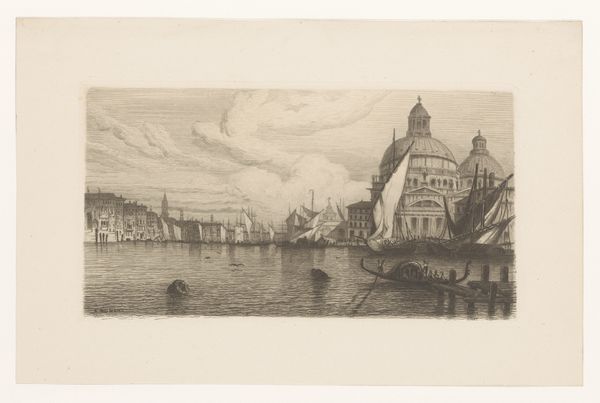
print, etching
# print
#
etching
#
old engraving style
#
landscape
#
cityscape
#
realism
Dimensions: height 109 mm, width 149 mm
Copyright: Rijks Museum: Open Domain
Editor: Here we have "Schepen op het water in Constantinopel," or "Ships on the Water in Constantinople," an etching by Willem Adrianus Grondhout, created sometime between 1888 and 1934. I find the composition really striking, with the detailed city in the background contrasting with the relative simplicity of the boats in the foreground. What stands out to you about this piece? Curator: What strikes me is the power dynamic inherent in representing Constantinople, now Istanbul, through a European lens. Grondhout, a Dutch artist, captures this scene during a period of intense geopolitical maneuvering. How does the depiction of the ships, seemingly leisurely, contrast with the reality of colonial expansion and trade routes that defined the era? Consider the European gaze, and how it historically framed the ‘Orient.’ Editor: That's a perspective I hadn’t fully considered. The boats do seem romanticized, now that you mention it. How might the choice of etching as a medium play into this? Curator: Etching, with its capacity for detailed linework, allows for a certain level of "objective" documentation, almost mimicking the precision of cartography. But objectivity is a myth. Even in its precision, the artist is making choices. Where does Grondhout focus his attention? Is he truly representing the lived experience of those within the cityscape, or is he exoticizing the scene for a Western audience? What does the absence of any people within that detailed city tell us? Editor: So it's less about what's shown and more about what's left out, or perhaps, the angle from which it's presented. I'm now questioning my initial view of the artwork as just a simple cityscape. Curator: Exactly. By looking beyond the aesthetic surface, we can start to unpack the complex social and political layers embedded within this seemingly tranquil image. Remember, art is never created in a vacuum, and acknowledging that historical and cultural context is key. Editor: Thanks, I will remember this next time. It has helped me a lot to interpret artworks more accurately and meaningfully.
Comments
No comments
Be the first to comment and join the conversation on the ultimate creative platform.
